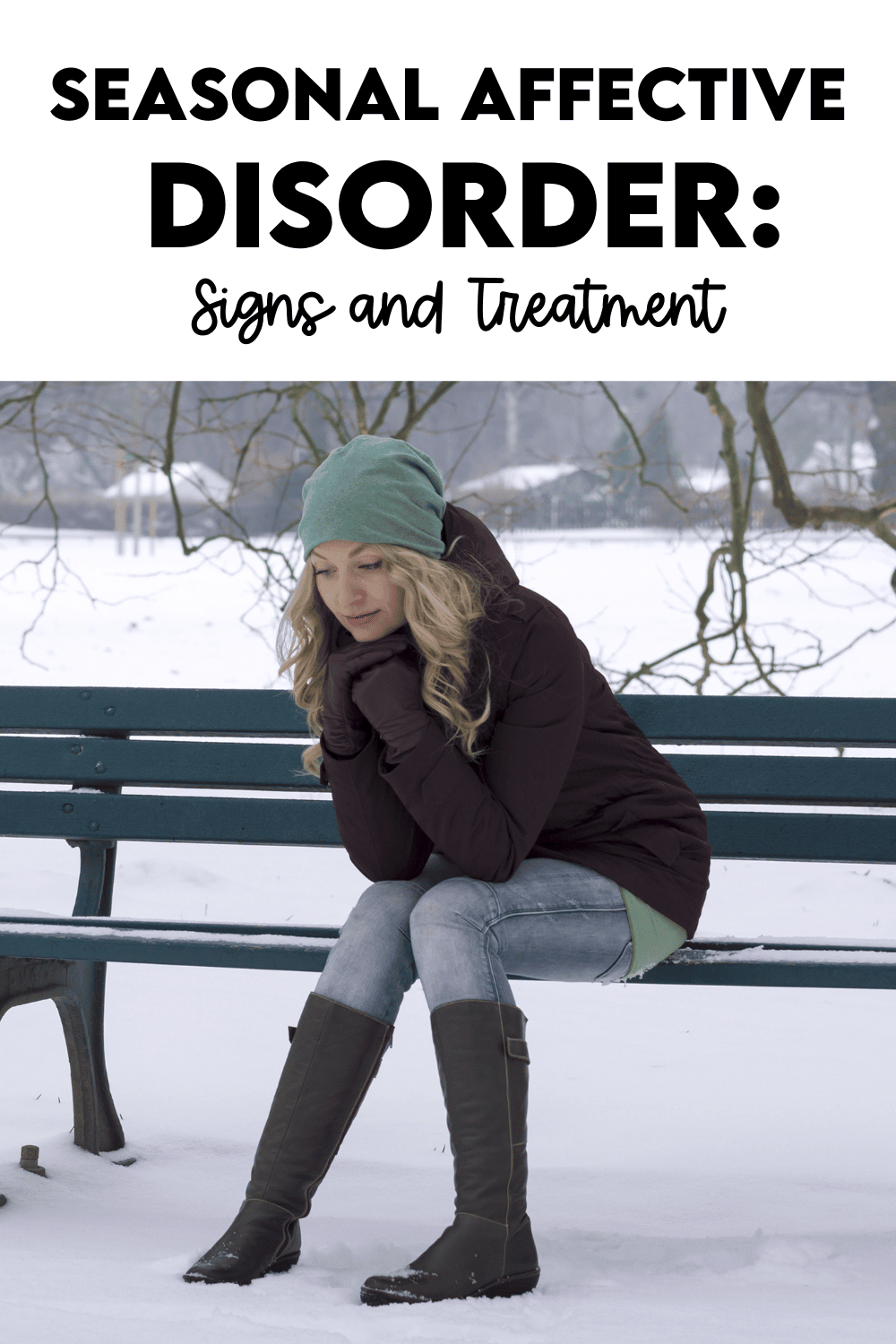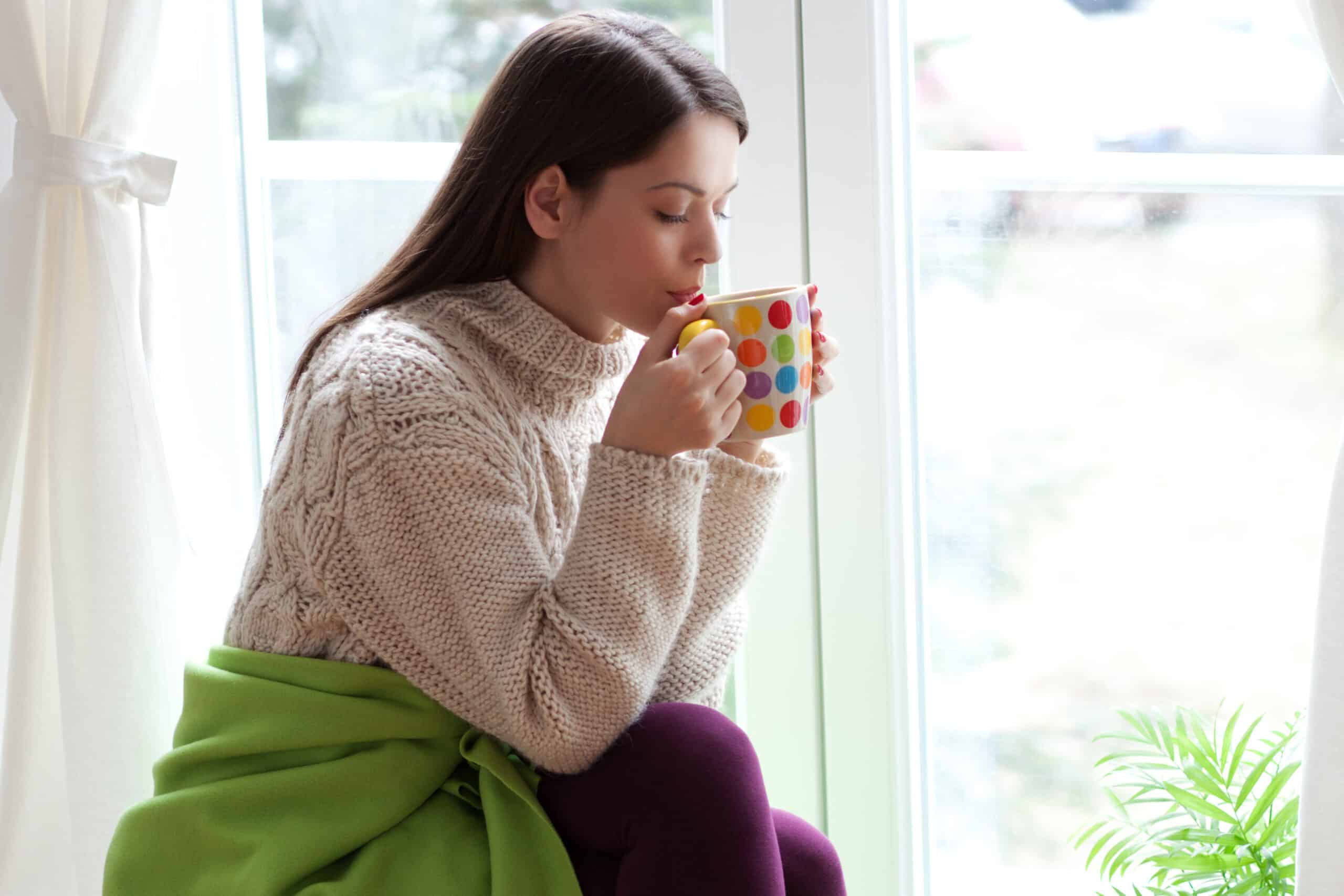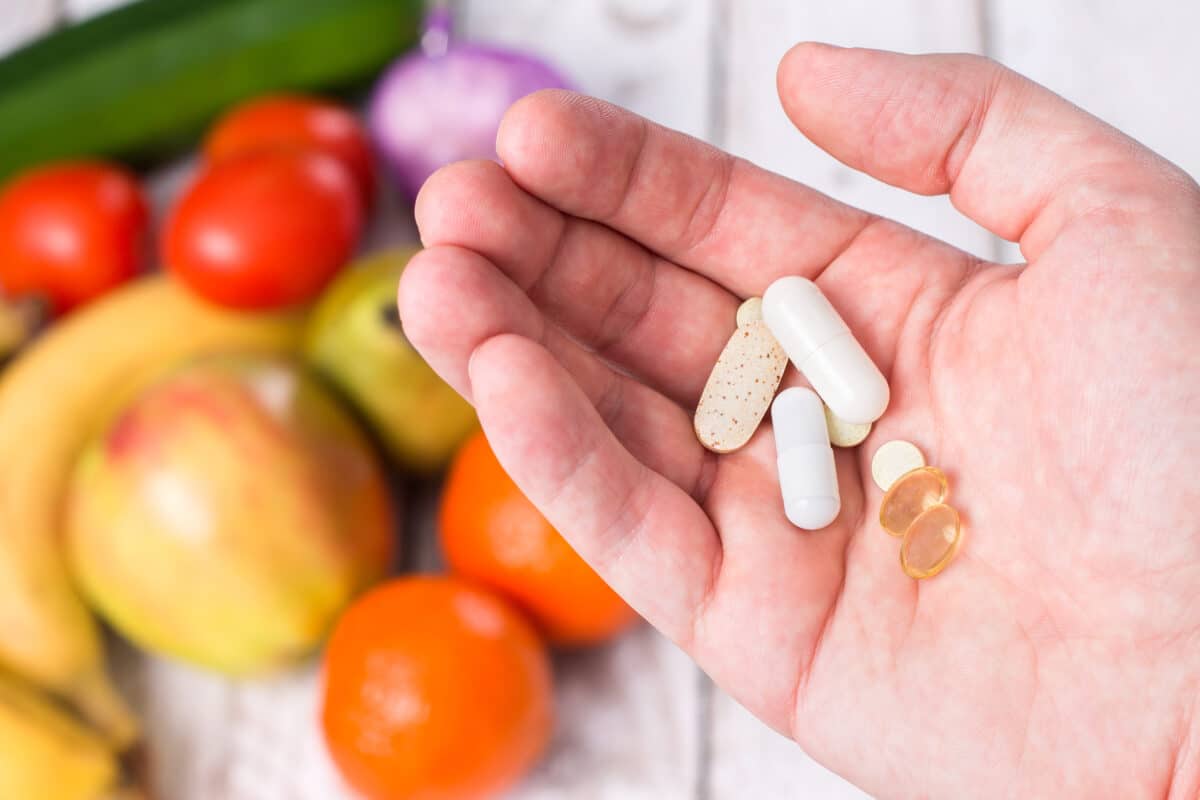Disclaimer: This post contains affiliate links. To learn more about ’em, click here. Seasonal Affective Disorder, or S.A.D., can make a person feel sad as the acronym suggests. Yet, this sadness or depression only lasts throughout the fall and winter months, with the affected person typically feeling better in the spring and summer. If you or someone you love is experiencing symptoms of Seasonal Affective Disorder, hope and relief are available. Keep reading below for tips on how to deal and combat Seasonal Affective Disorder symptoms.
Do I have Seasonal Affective Disorder?
Storytime: I grew up in sunny southern Nevada. Summer temps were in the 110’s (Fahrenheit) on average, while winter days rarely got below the 60’s. So it’s fair to say that I didn’t experience a true change of seasons until after I moved away for college. My first experience with autumn in college was mind-blowing! First, the leaves on the trees were exploding in lively colors: reds, golds, even pink! Then came the snow. Oh, the snow was so lovely! Though I hated driving in it, and my roommates had to take me shopping for a proper winter coat, I loved every minute of living in a place with four seasons! Fast forward several years to being married with four young children and living long-term in this beautiful, seasonal place. As a stay-at-home mom, I was basically housebound with toddlers and babies during the cold winter months. Soon, I started to notice a yearly pattern. Autumn through Christmas and New Year’s was usually great for me. Who doesn’t love the holidays? But January, February, and March were a different story. I was irritable, tired (more tired than your typical “mom-tired”), and I was having extreme mood swings. It wasn’t uncommon for me to burst into sobs multiple times daily. My husband was kind and supportive but baffled. What was going on with me? Spring would come around, and I would be cured! It was like magic! Unfortunately, it took years for me to recognize the pattern, but when I finally did, I started researching Seasonal Affective Disorder. With a few minor changes to my diet and routine, I finally feel like myself in the winter again–and you can, too!
What Are Seasonal Affective Disorder Symptoms?
Seasonal Affective Disorder is a type of depression. Symptoms typically begin in the fall or winter, finally subsiding in the spring months. According to the National Institute of Mental Health, it is not a separate disorder “but is a type of depression characterized by its recurrent seasonal pattern.” Many symptoms are the same as major depression, though a few are specific to S.A.D. Symptoms of depression may include:
“Feeling listless, sad, or down most of the day, nearly every dayLosing interest in activities you once enjoyedHaving low energy and feeling sluggishHaving problems with sleeping too muchExperiencing carbohydrate cravings, overeating, and weight gainHaving difficulty concentratingFeeling hopeless, worthless or guiltyHaving thoughts of not wanting to live.”
Fall and winter-specific symptoms:
“OversleepingAppetite changes, especially a craving for foods high in carbohydratesWeight gainTiredness or low energy”
Often your Seasonal Affective Disorder symptoms may start out mild but may intensify as the winter months continue. If these symptoms sound familiar to you, and you have experienced this cyclical depressive pattern for more than two years, you may suffer from S.A.D.
What Causes Seasonal Affective Disorder?
Shortened daylight hours in the winter are often thought to be one of the main culprits in developing S.A.D., which is why people affected by seasonal depression typically live in more northern places. For example, people in Michigan are far more likely to have S.A.D. than those in sunny southern California. Drops in serotonin levels are also thought to be a factor in Seasonal Affective Disorder. Serotonin is a brain chemical that affects mood, and according to the Mayoclinic, “reduced sunlight can cause a drop in serotonin that may trigger depression.” It’s not surprising then that the change of seasons can also disturb melatonin levels, affecting your sleep patterns and mood. Other risk factors also include a personal or family history of depression. It is also thought that because a person is getting less sunlight, their vitamin D levels may be lower than usual. Vitamin D helps to boost serotonin levels, so low levels can also play a role in triggering depression.
4 Ideas for Combating S.A.D.
Hope and happiness are definitely in reach for people suffering from S.A.D. Below you will find four ideas and suggestions you can try to help you combat your symptoms of Seasonal Affective Disorder. Of course, here at The Dating Divas, we always recommend speaking with your primary care physician before beginning any new supplements, diets, or exercise plans. Also, if your depression is severe or you have suicidal thoughts, don’t hesitate to reach out to The 988 Suicide & Crisis Lifeline. Here you can speak with trained professionals and get the help you need.
1. Light Box Therapy
What is light box therapy? Light therapy, also known as bright light therapy or phototherapy, is when the user sits or works by the artificial light of a light box for at least 20-30 minutes a day. Light boxes filter out harmful U.V. rays and are most effective when used regularly. Psychologist Dr. Adam Borland explains that “Especially in the winter, our bodies react to the gray, cold weather and lack of natural sunlight. What light therapy does is compensate for the lack of exposure that we get from natural sunlight.” Light therapy boosts serotonin levels and also helps to balance out melatonin levels. Here are some tips to help get you started: Where can you buy a light box? We looked around and found some of the most recommended ones for you to try out.
Verilux HappyLightCarex Day-Light Classic Therapy LampLavish Home
Some lamps work as alarm clocks, turning on in the morning so that you wake up to the light.
2. Vitamin D and Other Supplements
When the seasons change and temperatures begin to drop, it’s only natural for people to head indoors. This is because lower levels of serotonin in the body are linked to getting less sunlight in the fall and winter months. Because our bodies produce vitamin D after being exposed to sunshine, it makes sense that vitamin D supplements are beneficial when wanting to boost serotonin. After all, vitamin D is not called the “sunshine vitamin” for nothing! When I first started researching S.A.D. I wondered if my vitamin D levels were low. After a simple blood test at my doctor’s office, I found that my vitamin D levels were extremely low. My doctor prescribed me a short-term high dosage of vitamin D to get my levels back to normal and advised me to take a lower dose regularly to combat low levels. This, combined with a few other things, made a world of difference in my struggle with Seasonal Affective Disorder. If you think your Vitamin D levels are low, please make an appointment with your primary care physician. A simple blood test can determine if you need to take a vitamin D supplement. However, recognize that you cannot treat your seasonal depression with only vitamin D. For instance, it is best used in addition to light box therapy, exercise, and other adjustments to your lifestyle. Pharmacy Times also recommends a few more dietary supplements to help combat your symptoms of Seasonal Affective Disorder. For example, you might consider trying 5-HTP, Melatonin, or St. John’s Wort. All of these supplements have been found to help balance your mood. Omega-3 fish oil has also been known to help with depression. In fact, according to a study from the University of Pittsburgh Medical Center, “those with higher blood levels of omega-3s were found to be more agreeable.” You can also try eating foods high in omega-3s, such as salmon, oysters, flaxseed, chia seeds, walnuts, and soybeans. Again, we always recommend speaking with a doctor before adding any supplements to your diet.
3. Exercise and Sleep
Exercise is beneficial to combating depression, but if you have ever been struggling with S.A.D., sometimes the last thing you want to do is workout. The good thing is, according to a recent study, researchers found “that both high-intensity forms of activity, such as aerobic exercise, dance, and exercise machines, and lower-intensity forms, including yoga and stretching, were equally effective at decreasing one’s odds of depression.” So, no worries if you aren’t up to going to spin class! Stretching and yoga at home in your pajamas are just as effective! Exercising with someone else can also help to motivate you to move more, so enlist a friend or your spouse. We even have a flirty sexercise date you can do with your sweetie. It will not only ease your S.A.D. symptoms, but it will also boost the emotional health of the relationship with your spouse. Win-win! According to a study on Seasonal Affective Disorder and exercise, it’s been found that regular “physical exercise caused a 50% decrease in depressive symptoms.” Combine regular exercise with increased sunshine, and you have a powerful ally for tackling your S.A.D. symptoms. Here are some ideas for exercise that will get you outdoors on a sunny winter day (don’t forget to bundle up against the cold weather!)
Take a walk in your neighborhoodSnowshoeBuild a snowmanIce skateSkiShovel the driveway
Regular sleep is just as important as regular exercise. Make sure to keep a regular sleep schedule as it will “expose you to light at consistent and predictable times.” While everyone has sleepless nights here and there, sticking to a sleep schedule will help alleviate your symptoms. Take a look at our article on how to take care of yourself for more reasons why getting regular sleep helps your mind and body function properly.
4. Food and Diet
Healthy food prep isn’t usually at the top of your list when you aren’t feeling your best. Instead, we usually reach for convenient comfort food rich in carbs and sugars. But when we are eating more mac & cheese and fewer salads, our bodies will respond negatively. When fighting off Seasonal Affective Disorder symptoms, try eating these mood-boosting foods:
Lean Proteins – In addition to being a great energy source, lean proteins are also chock full of amino acids that positively affect your mood.Berries – Berries are rich in vitamin C, which helps lower cortisol levels in your body. Lower cortisol equals lower stress.Bananas –This fruit contains tryptophan, the amino acid that helps make you feel calm and relaxed. And bananas are also rich in potassium, a nutrient known to help fuel your brain.Less sugar – We know sugar isn’t great for our bodies for many reasons, but did you know that “too much sugar and too few omega-3 fatty acids can functionally change your brain and slow it down?” Slow brain function is definitely not what you want!
Beating Seasonal Affective Disorder
If you feel like your S.A.D. symptoms are not being controlled on your own, or if you need more support, please make an appointment to see your doctor. A doctor may prescribe antidepressant medications to help treat your symptoms, especially if your symptoms are severe. You know your body better than anyone else, so advocate for yourself. If you want or need more support, ask your spouse or another trusted friend to attend your doctor’s appointment with you. Living with Seasonal Affective Disorder doesn’t mean you will have to be sad forever. Treatment options are available, and you will soon learn to feel like yourself again during the long winter months.









